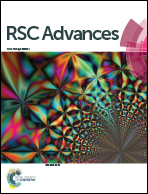Synthesis of silver nanoparticles via traditional Chinese medicine and evaluation of their antibacterial activities
Abstract
Silver nanoparticles (AgNPs) are widely used in antibacterial research, but diverse methods for the green synthesis of AgNPs are still underexplored. Phenols, the major components in traditional Chinese medicines (TCMs), can reduce silver ions (Ag+) to prepare AgNPs. The representative phenolic compounds are flavonoids and chlorogenic acid (CA) in TCMs. Herein, we report a new strategy to prepare AgNPs via decoctions and dregs of TCMs as reductants and dispersants. Lonicera japonica flos (LJ), Astragalus membranaceus (AM), and Eucommia ulmoides bark (EU) were chosen due to their high contents of phenols. 1H-NMR and HPLC were run to monitor the reaction for AgNP synthesis in decoctions, and XRD and TEM analyses were performed to characterize the synthesized TCMs-AgNPs. In addition, AgNPs prepared by spent Chinese medicinal grounds (SCMGs) were characterized by IR and XRD. The antibacterial assessment demonstrated that these TCMs-AgNPs significantly inhibited the growth of S. aureus and P. aeruginosa and effectively protected lettuce leaves against P. aeruginosa infection. Taken together, this study developed a new synthetic strategy that used decoctions and dregs of TCMs to obtain AgNPs with excellent antibacterial activity, which indicated the potential antibacterial application of these new TCM-based AgNP materials.



 Please wait while we load your content...
Please wait while we load your content...